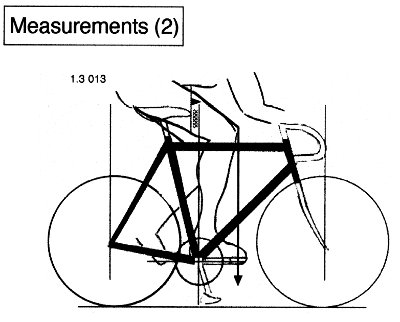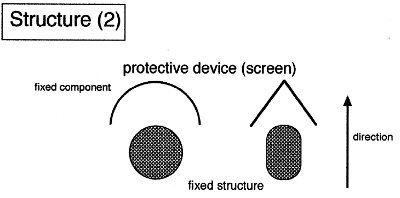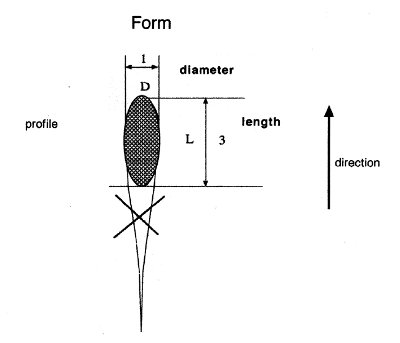Introduction
The UCI have what could quite charitably be described as a luddite approach to bicycle design. Witness for example their responses to Graeme Obree's innovations, which ultimately culminated in the rejection of post-Merckx hour records in favour of the "athlete's hour" record. As an aside, Steven Berkoff does an excellent job of portraying an international commissaire in "Flying Scotsman".
In the UK,the situation would appear to be complicated: in England and Wales, time trialling is governed by Cyclung Time Trials, who are not affiliated to the UCI, and who have their own set of regulations. There are occasionally British Cycling events with time trials - because BC are UCI affiliated, I presume those events would be subject to UCI technical regulations. In Scotland, all cycle sport is run by the Scottish Cycling Union, which is UCI affiliated so I expect that formally all time trial bikes should be UCI-compliant. I don't know what the situation in Northern Ireland is, though I suspect it's quite complex.
Personally, all my time trialling is conducted under CTT regulations, but with one annual exception, the Duo Normand. The Duo is UCI registered, and nominally at least, all bikes shouls be UCI-compliant, There's been some discussion on UK time trialling forums recently indicating that in 2009 the race will enforce the ridiculous 1:3 regulation, for all competitor categories. I think this puts my TT bikes out of the frame.
All diagrams and quotations come from the UCI regulations document (pdf). Bear in mind that this document does get updated from time to time (the version I've used is dated 11th March 2009. In the text below, I'll use the following icon to indicate particularly important points: 
What is a bicycle?
To begin with, the UCI define what they mean by "bicycle". This is paragraph 1.3.006:
The bicycle is a vehicle with two wheels of equal diameter. The front wheel shall be steerable; the rear wheel shall be driven through a system comprising pedals and a chain.
For most modern bikes, this won't present many issues, but if you're thinking of unveiling your 1980s retro TT beast with it's 26" front wheel in a UCI event, forget it. Similarly, don't try an antique shaft-driven bike (as used by Major Taylor), that falls foul of para 1.3.006 as well. To add to this, UCI regulation 1.3.007 insists that the bicycle and its components must be commercially available - they seem to frown on parts designed for specific events or purposes:
Bicycles and their accessories shall be of a type that is or could be sold for use by anyone practising cycling as a sport. The use of equipment designed especially for the attainment of a particular performance record or other) shall be not authorised.
The rider is constrained in what parts of his or her anatomy are permitted to contact the bike. Paragraph 1.3.008 clarifies this for road bikes:
The rider shall normally assume a sitting position on the bicycle. This position requires that the only points of support are the following: the feet on the pedals, the hands on the handlebars and the seat on the saddle.
Of course, and as we'll see later, time trial bikes are permitted a further contact point - the elbow/forearm pads of trialthon style aerobars. I imagine the forgoing paragraphs are principally aimed at banning recumbent cycles, possibly the earliest manifestation of UCI reaction to cycle development. In 1.3.009, we return to the steering - the handlebars need to permit steering in all circumstances and in complete safety. I suspect that one person's "complete safety" might be someone elses' "horribly dangerous", and that this paragraph would be rather subjective in its interpretation. I suppose it does mean that one can't use a clown's comedy bike in a UCI competition.
Road bike specification
The diagram below, Measurements (1), indicates which regulation describes which component. I'll assume that most competitive bike wheels comply with the regulations - these really concern impact safety in a road race situation. For our purposes, I'll concentrate on a couple of points - saddle dimension and position.

 Regulation 1.3.013 indicates that the nose of the saddle must lie 5cm behind a vertical line passing through the centre of the bottom bracket shell. Infringements may occur if the frame has a particularly steep seat tub, particularly if coupled with an inline seat pin. Of course one might get round this regulation with an abnormally shaped saddle. I believe Graeme Obree, when confronted with a new regulation to do with saddle position responded by hacksawing off the saddle's nose! To clap a stopper on such "antics", 1.3.014:
Regulation 1.3.013 indicates that the nose of the saddle must lie 5cm behind a vertical line passing through the centre of the bottom bracket shell. Infringements may occur if the frame has a particularly steep seat tub, particularly if coupled with an inline seat pin. Of course one might get round this regulation with an abnormally shaped saddle. I believe Graeme Obree, when confronted with a new regulation to do with saddle position responded by hacksawing off the saddle's nose! To clap a stopper on such "antics", 1.3.014:
The saddle support shall be horizontal. The length of the saddle shall be 24 cm minimum and 30 cm maximum.
Paragraph 1.3.013 also raises the issue of morphological exemption: that individuals may apply for exemption due to their physical size or proportions. The crucial thing appears to be the check whether the front of the knee lies beyond a vertical line passing through the pedal spindle (presumably this means in front of, though it's not clear) - refer to the diagram labelled Measurements (2), below.

Essentially, for the UCI, a bicycle frame has to be a traditional triangular form. Within that, each element mustfit an imaginary box indicated in a diagram, Shape (1), which I've not reproduced here. This regulation is intended to allow such things as shaped tubes and sloping top tubes.
Time Trial bike specification
Time trial frames are permitted a bit more leeway, as indicated in the diagram below, Shape (2). There's also a bit more design freedom in the joints or gussets between frame tubes (see the bottom panel).

 Diagram Structure (1b), shown below, adds to the bicycle specification such that aero handlebar extensions can be used - this is described in 1.3.023:
Diagram Structure (1b), shown below, adds to the bicycle specification such that aero handlebar extensions can be used - this is described in 1.3.023:
For road time trials and the following track events: individual and team pursuit, kilometre and 500 m a fixed extension may be added to the steering system; in this instance, only a position where the forearm is in the horizontal plane is permitted. The distance between the vertical line passing through the bottom bracket axle and the extremity of the handlebar may not exceed 75 cm, with the other limits set in article 1.3.022 (B,C,D) remaining unchanged. Elbow or forearm rests are permitted (see diagram «Structure (1B)»)
In this regulation, the important dimension is shown - the furthest-most point of the handlebar extensions must not reach further than 75cm in front of the centre of the bottom bracket axle, but may be extended by 5cm via morphological exemption. Note the requirement that the forearms must lie horizontally - this would seem to eliminate the so-called praying mantis position recently adopted by some in the professional peleton.

 1.3.024 states that you're not allowed to have:
1.3.024 states that you're not allowed to have:
Any device, added or blended into the structure, that is destined to decrease, or which has the effect of decreasing, resistance to air penetration or artificially to accelerate propulsion, such as a protective screen, fuselage form fairing or the like, shall be prohibited.
This is illustrated (sort of) in the diagram below, Structure (2). In fact there are several diagrams illustrating different types of structures intended to create a faired effect. In this case, it's a kind of shield, and is clearly outlawed. Streamlining is referred to as "fuselage form". See

 Streamlining is referred to as "fuselage form". See the diagram below labelled Form. It's defined as:
Streamlining is referred to as "fuselage form". See the diagram below labelled Form. It's defined as:
A fuselage form shall be defined as an extension or streamlining of a section. This shall be toleratedas long as the ratio between the length L and the diameter D does not exceed 3.
This is the infamous 1:3 rule that many teams at the Tour of California fell foul of in early 2009. It's basically stating that any component or part of the bike (so I guess this would include aero seat pins and handlebar structures) must be no more than 3 times as long as it is deep. This, I guess intended to prevent the adoption of extreme aero shapings. However, i reckon many TT components will fall outwith these dimensions.

 Fairings are illustrated below, in the context of a frame element shielding a rotating object, the wheel. In this example, which could include sculpted seat tubes, the arrangement is only leagal if a flat object can be passed between the element and the wheel. The suggested device for this appears to be the UCI credit card!
Fairings are illustrated below, in the context of a frame element shielding a rotating object, the wheel. In this example, which could include sculpted seat tubes, the arrangement is only leagal if a flat object can be passed between the element and the wheel. The suggested device for this appears to be the UCI credit card!


In which events are these regulations applied, and how?
I assume these regulations will be enforced in professional UCI events. This does seem to be true given the antics of professional teams trying to meet the (previously unenforced) regulations at the Tour of California. There is some uncertaintly as to whether they would be applied in otherwise amateur events, such as the Duo Normand. Having witnessed the bike checking at last year's Duo, I'd be surprised if they could spot components infringing the 1:3 rule.
The principal method for measuring bikes appeard to be lining them up against a fence with vertical railings, and eyeballing the alignment! Whether a couple of commissaires could deal with several hundred pairs of bikes during the day, I dont know - but it seems unlikely. In the mean time, I'll evaluate what I'd need to do to make either of my two geared time trial bikes compliant.
In Part 2, I'll write about which components in those two bikes conform to the regulations, and which do not.

